Table of Contents
ToggleIn a world where even your toaster can connect to Wi-Fi, it’s hard to ignore the profound impact of technology on daily life. From smartphones that keep us in touch with friends to smart homes that make life a breeze, technology isn’t just a tool; it’s a lifestyle. Imagine trying to schedule a dinner without a calendar app or navigating without GPS—talk about a recipe for chaos!
But it’s not just about convenience; technology shapes how we learn, work, and connect. It’s the backbone of innovation, driving us toward a brighter future. Whether it’s telemedicine bringing healthcare to remote areas or online education making learning accessible, technology is the superhero we didn’t know we needed. So, buckle up as we dive into why embracing technology is not just smart; it’s essential for thriving in today’s fast-paced world.
Understanding Technology’s Role
Technology significantly shapes daily activities, acting as a driving force behind innovation and connectivity. Its importance in modern life cannot be understated.
Definition of Technology
Technology encompasses tools, systems, and methods developed to solve problems or enhance human capabilities. Examples include smartphones, computers, and software that streamline tasks. It transforms how people interact and access information. Ultimately, technology not only facilitates communication but also supports productivity and entertainment, meeting diverse needs across various sectors.
Evolution of Technology
The evolution of technology spans various stages, from simple tools to advanced digital systems. Early innovations, like the wheel and printing press, laid foundational groundwork for future advancements. Each technological leap has influenced societal changes, such as the Industrial Revolution and the rise of the internet. Current trends emphasize artificial intelligence and automation, shaping economies and lifestyles. As technology progresses, it continues to redefine boundaries, enabling advancements that promote global connectivity and enhance quality of life.
Benefits of Technology in Daily Life

Technology impacts daily life in varied and significant ways, providing numerous benefits that enhance overall quality of living.
Enhanced Communication
Enhanced communication stands at the forefront of technology’s advantages. Instant messaging apps, video calls, and social media platforms allow individuals to connect across long distances. People share information instantly, breaking geographical barriers. Businesses rely on these tools to facilitate collaboration among remote teams. Faster responses transform customer service interactions improving satisfaction rates. In education, technology enables seamless communication between teachers and students fostering a collaborative learning environment.
Improved Access to Information
Improved access to information revolutionizes how people learn and make decisions. The Internet serves as a vast repository of knowledge available at one’s fingertips. Online databases and educational resources facilitate research in various fields. Individuals expand their understanding through e-books, articles, and tutorials. Mobile devices enable users to seek out information anytime, anywhere enhancing convenience. Search engines return relevant content quickly allowing users to find answers promptly. This accessibility empowers informed decision-making in everyday life.
Technology in Education
Technology reshapes education, making learning more accessible and engaging. The rise of e-learning platforms provides students with flexible options to enhance their education.
E-Learning Platforms
E-learning platforms like Coursera, Udemy, and Khan Academy offer diverse courses for students of all ages. Many individuals access these resources at their convenience, facilitating self-paced learning. This model supports learners in various subjects and skill levels, allowing them to tailor their educational experiences. Statistics indicate that 70% of students believe online courses improve their retention of information. With features such as video lectures and quizzes, these platforms enhance understanding and engagement.
Interactive Learning Tools
Interactive learning tools like educational apps and virtual reality simulations revolutionize how students interact with content. Students can dive into immersive lessons that foster deeper understanding through hands-on experiences. Tools such as Quizlet and Kahoot! emphasize gamification, making learning enjoyable and motivating. Research shows that interactive learning can increase student performance by up to 30%. These tools encourage collaboration, critical thinking, and creativity, equipping students with essential skills for the future.
Technology in Healthcare
Technology plays a crucial role in revolutionizing healthcare practices and patient experiences. Its integration enhances efficiency and accessibility, particularly in telemedicine and health monitoring.
Telemedicine Advancements
Telemedicine advancements streamline healthcare delivery, allowing patients to consult with healthcare providers remotely. Virtual consultations reduce travel time and waiting room congestion. Research indicated that 76% of patients prefer telehealth for its convenience. Remote monitoring solutions enable continuous observation of patient health, especially for chronic conditions. With solutions like video conferencing and secure messaging, healthcare professionals now offer timely interventions. Data show that telemedicine can improve patient outcomes by up to 20%, making it a vital component in today’s healthcare landscape.
Health Monitoring Devices
Health monitoring devices facilitate proactive health management, empowering individuals to track their wellness. Wearable devices, like smartwatches and fitness trackers, collect vital data such as heart rate and sleep patterns. These insights help users make informed lifestyle adjustments. Studies demonstrate that 60% of users report improved health awareness through regular device use. Additionally, such technology promotes timely communication with medical professionals, ensuring quick response actions when necessary. The use of these devices fosters a more engaged patient-community relationship, enhancing overall health literacy and management.
Technology and the Economy
Technology significantly influences economic growth and job markets. By creating new job opportunities, it enhances employment rates and drives innovation across sectors.
Job Creation and Opportunities
Job creation stems from the continuous advancement of technology. Industries that adopt new technologies often experience growth, needing skilled workers to manage increased operations. For instance, the rise of artificial intelligence and machine learning has led to up to 1.4 million new jobs in data science and analytics by 2022. People with technical skills, such as software developers and IT specialists, find expanded opportunities. Remote work options also emerge, allowing businesses to tap into global talent pools.
Technological Innovations in Industries
Technological innovations reshape multiple industries. Manufacturing benefits from automation, streamlining production processes and reducing costs. In retail, e-commerce technologies enable businesses to reach customers worldwide. Reports indicate that online shopping has grown by 30% in the past two years, shifting consumer behaviors. Healthcare also sees significant changes, with telehealth becoming standard practice. Such advancements improve efficiency and patient experience, enhancing overall service delivery. Embracing these technologies encourages competitiveness, driving economic success.
Technology’s role in modern life is undeniable. It streamlines daily tasks enhances communication and transforms education and healthcare. As individuals and societies adapt to rapid advancements it’s crucial to embrace these changes for personal and collective growth.
By leveraging technology, people can improve their quality of life gain access to vital information and foster connections that transcend geographical barriers. The continuous evolution of technology promises to reshape the future further driving innovation and economic success. Adapting to this dynamic landscape not only prepares individuals for the challenges ahead but also unlocks new opportunities for advancement and collaboration.



